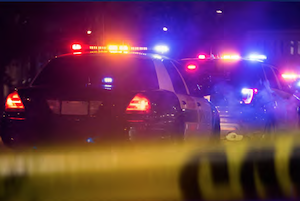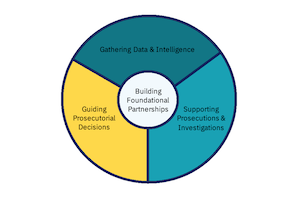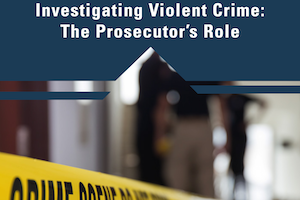Seeking Justice and Solutions: A Prosecutor’s Guide to Opioid Overdose Investigations

Authors: PCE and Aequitas

Authors: PCE and Aequitas

Authors: PCE, DANY, Bronx District Attorney’s Office, and Aequitas

The Delaware Attorney General’s Office has a dedicated Community Engagement Unit that strives to create a safer community through consistent collaboration with the community and many outreach programs from resource fairs to reentry support. A member of the unit was formerly incarcerated and has provided invaluable assistance with community engagement.
Read More
Domestic violence is a social, economic, and public health concern that impacts men, women and children and can perpetuate negative effects across generations. To better address this serious issue, this guide provides strategies to prosecutors that increase victim safety and offender accountability and includes information on multi-agency collaborations and co-located service models such as family justice centers. Read
Read More
Office of the Licking County Prosecuting Attorney (Newark, OH)
Population: 175,409 | Contact Information
The Office of the Licking County Prosecuting Attorney (LCPA) is creating a Domestic Violence Unit (DVU) that will focus on vertical prosecution to hold offenders accountable and ensure community safety.
Read More
St. Paul City Attorney’s Office (St. Paul, MN)
Population: 305,877 | Contact Information
The St. Paul City Attorney’s Office (SPCAO) created the “Gone on Arrival (GOA) Project” to address threat issues in domestic violence cases when the offender is not at the crime scene when law enforcement arrives.
Read More
The King County Prosecuting Attorney’s Office in Seattle, Washington has provided civil protection to victims of domestic violence for over thirty years through its Protection Order Advocacy Program. They now leverage a tool called Legal Atoms, a software platform in which protection order specialists can work alongside victims remotely to complete the steps necessary to file for a civil protection order. See PowerPoint. The office also created Project Safety, a partnership with civil Legal Aid to provide legal navigators to DV victims to assist them with needed civil services.
Read More
Authors: PCE, NRTAC
As the demand for forensic evidence has exploded, so has the pressure on crime laboratories to keep pace with an ever-growing workload. This paper, developed by PCE’s Executive Director Kristine Hamann and St. Louis Circuit Attorney’s Office Chief of Trials Rachel Smith, addresses the critical question of how best to maximize the resources of a public forensic laboratory. This question is explored in three different parts, each with an emphasis on the prosecutor’s perspective:
Read More
The Problem: According to a 2019 article from the Department of Education, over seven million (or one in six students) missed 15 or more days of school in the 2015-2016 school year. The highest rates of absenteeism occurred at the high school level, where chronically absent students also represent those most likely to drop out. Dropping out of high school has been linked to poor outcomes in adulthood, from poverty and diminished health to involvement in the criminal justice system.
Read More
Author(s): Kristine Hamann, PCE and John Delaney
Violent crime prosecutors do difficult and important work. In October 2017, fifteen seasoned violent-crime prosecutors spent a day and a half sharing their ideas about how to improve the investigation of violent crimes at a meeting sponsored by the Bureau of Justice Assistance of the U.S. Department of Justice. Though the group had much in common, it was quickly apparent that there are a variety of approaches to their work.
Read More